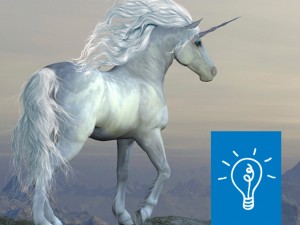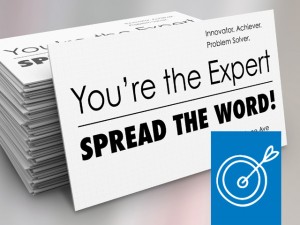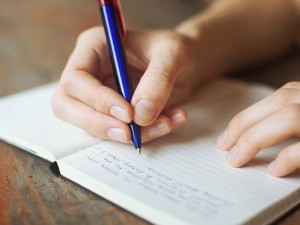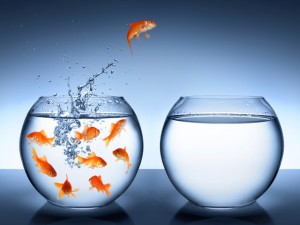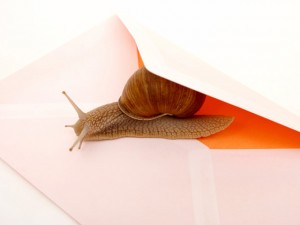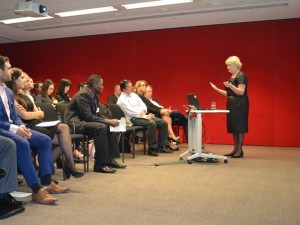Energy balance is the key to achieving or maintaining a healthy weight. It refers to balancing the energy you get from food (energy ‘in’) to your daily energy requirements (energy ‘out’) - it’s a constant burn!
Regardless of our activity levels (even when we’re asleep) we need energy to maintain normal body functions, such as breathing and digesting food.
The number of calories your body burns at rest to maintain these normal body functions is called your Basal Metabolic Rate (BMR). It changes with age, weight, height, gender, diet and exercise habits.
As you can see, we need a continual supply of energy; otherwise we would not be able to survive.
How do we measure energy?
If we are going to balance energy, we obviously need a unit to measure it by. The most commonly used unit of energy is a calorie.
Although we speak about calories for simplicity, what we almost always mean is kilocalories (1,000 calories). In Australia we often use the unit kilojoules instead of calories. 1 kilocalorie = 4.2 kilojoules.
When we see calories displayed on food labels it is simply telling us how much energy is contained in that particular food.
The balancing act
The energy we use can only be obtained from food (measured in calories or kilojoules). The problem with weight gain occurs when we simply consume too much. Weight gain and weight loss comes down to a simple balance of ‘energy in’ versus ‘energy out’.
That is, when we consume more energy (food) than we burn through activity (called an energy surplus or positive energy balance) on a daily basis, we gain weight. This is because our bodies are very efficient at storing excess energy as fat.
We evolved this process so we would have a store of energy when food was scarce. However, in developed countries like Australia, food is so readily available that it is very easy to consume more food than we need. This has resulted in most of the population being overweight.
On the other hand, if we consume less energy than we burn (called an energy deficit or negative energy balance) on a daily basis, we will lose weight (we will need to use our fat stores as energy instead of food, and therefore ‘burn fat’).
If we consistently balance our food consumption with our energy requirements, then we remain at a constant weight.
So, even though counting calories isn’t always necessary, an appreciation of the energy content of food is desirable.
Consider both sides!
To maintain a healthy weight (and especially to lose weight) we need to avoid an energy surplus (consuming excess energy than we require). Remembering that there are two sides to this balancing act, we can achieve this by:
- Restricting our energy intake
- Increasing our energy expenditure
Restricting our energy intake
To restrict our calorie intake we have to be smart about the types of foods we eat. We get energy from three different types of foods: carbohydrates, proteins and fats.
Eating large portion sizes is a major contributor to many people exceeding their daily energy requirements
Both carbohydrates and proteins contain four calories per gram, and fat contains nine calories per gram, meaning that fat has much more energy per gram. Eating a diet low in fat will therefore help restrict our calorie intake.
As well as watching what types of food we eat, we also need to be careful about the quantity of food we eat. Eating large portion sizes is a major contributor to many people exceeding their daily energy requirements, causing them to gain weight (even though they are eating ‘healthy foods’).
Tips to avoid overeating
- Eat smaller portions! If you have to fill your plate with food, use smaller plates! The size of your meal should roughly equate to the size of your fist. Refer to the Government’s Eat For Health website for the recommended serving sizes for different foods.
- Eating five to six small meals per day (all about the same size as your fist) helps our body maintain stable blood sugar levels (therefore reducing cravings and decreasing energy peaks and troughs). This also increases our BMR every time we eat, helping us burn more energy. A meal doesn’t have to come on a plate. It might be an apple and yoghurt or a hundred grams of chicken (not a kilo) and a salad.
- Don’t drink your calories. Drinking alcohol is the main reason many people exceed their daily energy requirements. And don’t be fooled by some of the ‘healthier’ options; some fruit juices and smoothies can contain more calories than we might have in a typical lunch or dinner…and people drink these in between meals believing they are a healthy option!
Increasing our energy expenditure
Exercising is obviously a great way to burn calories, with the added bonus of improving your fitness. Exercising also increases your BMR, so you burn more energy, even at rest.
Our lifestyles are becoming increasingly sedentary, which is contributing to the ‘obesity epidemic’. By embracing an active lifestyle you will expend more energy and therefore help avoid an energy surplus.
Guidelines to incorporate activity into routine life:
- Don’t drive if you can cycle
- Don’t cycle if you can walk
- Don’t walk if you can run
- Whenever you are walking, try and increase the intensity
- Take the stairs whenever possible (instead of escalator or lift)
- Walk to the shops
- Get off the train or bus a stop earlier
- Take the dog for a walk
- Find an activity you enjoy
- Be active with a partner or friend for motivation and encouragement
General guidelines
- Everyone in the world is different and so is our recommended daily energy intake. But in general terms the average recommended calorie intake per day for a woman is around 2,000 (8,400 kilojoules) and for a man is 2,500 (10,500 kilojoules).
- Weight loss should be gradual: no more than 1 kg per week
- A caloric deficit of 7,000 kcal is needed to lose approximately 1 kg. Therefore, the caloric deficit should not exceed 1,000 kcal per day.
- Weight loss rate decreases over time, because the difference between the energy intake and energy needs gets smaller as you lose weight
It is easier to achieve an energy deficit by reducing calorie intake than by increasing physical activity. For example: to lose ½ kg per week, you need a 500 kcal deficit per day. Expending 500 kcal is equivalent to walking approximately 6.4 km more each day. Whereas the same 500 kcal deficit is achieved by eliminating a packet of chips from your diet.
On the other hand, if you add the equivalent of a packet of chips a day to your diet (while maintaining the same activity levels), you will gain ½ kg per week – more than 25 kg over a year!

The Waiting Room looks at of some of the common medical conditions which advisers may come across when dealing with clients.
Unified Healthcare Group serves Australia’s financial services industry by providing a one-stop solution for all medical requirements associated with life insurance claims and underwriting.
Contact or follow the author: Telephone: 1300 558 583 | Website | Email | LinkedIn





